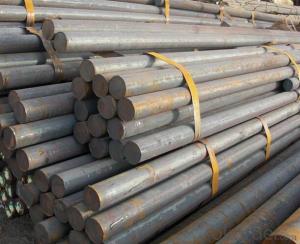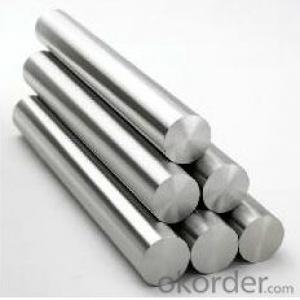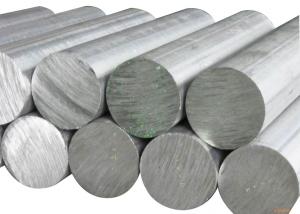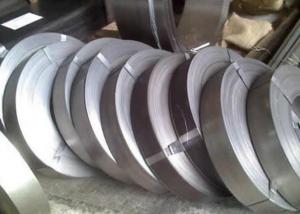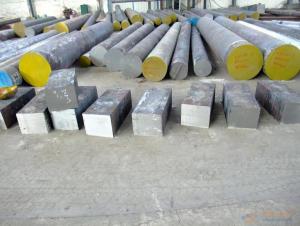Alloy Steel 1.7220/35crmo/SCM435 Tool Steel Special Steel
- Loading Port:
- China main port
- Payment Terms:
- TT OR LC
- Min Order Qty:
- 25 m.t.
- Supply Capability:
- 10000 m.t./month
OKorder Service Pledge
OKorder Financial Service
You Might Also Like
Item specifice
Chemical Composition(%)
| C | Si | Mn | Cr | Mo | Ni | P | S |
| 0.32-0.40 | 0.20-0.40 | 0.40-0.70 | 0.80-1.10 | 0.15-0.25 | ≤0.30 | ≤0.035 | ≤0.035 |
Standard
| GB | AISI | DIN | JIS | BS |
| 35CrMo | 4137 | 34CrMo4 | SCM432 | 708A37 |
Available Size
| Rolled round bar | φ20-120mm × L |
| Forged round bar | φ130-195mm × L |
Characterstics
| The steel with high strength and toughness, hardenability is better also | |||||||
| After conditioning treatment quenching deformation of small | |||||||
| high fatigue limit and repeated impact resistance |
Applications: The steel is suitable for manufacturing requires a certain strength and toughness of large and medium-sized plastic mold
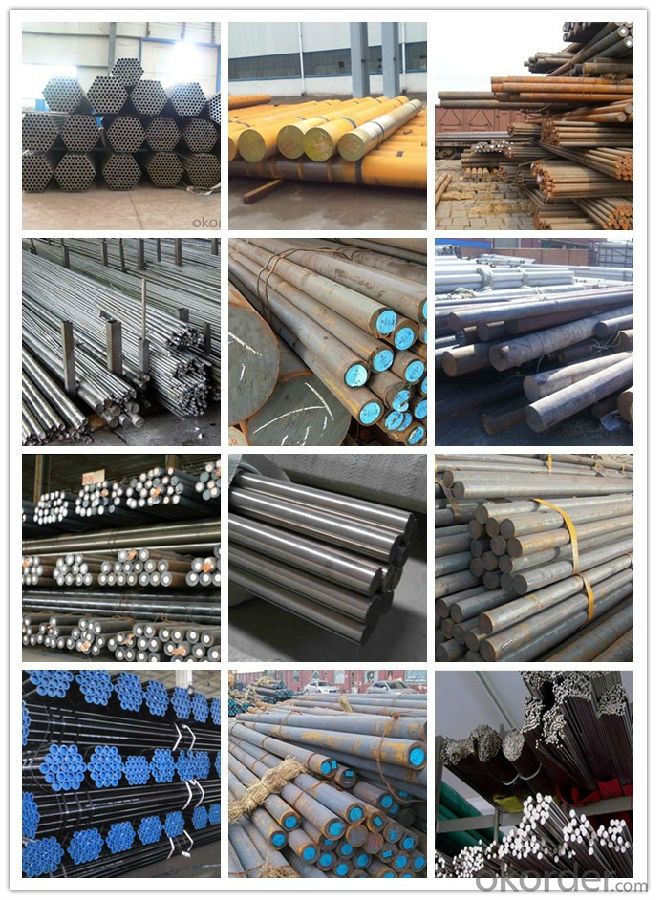
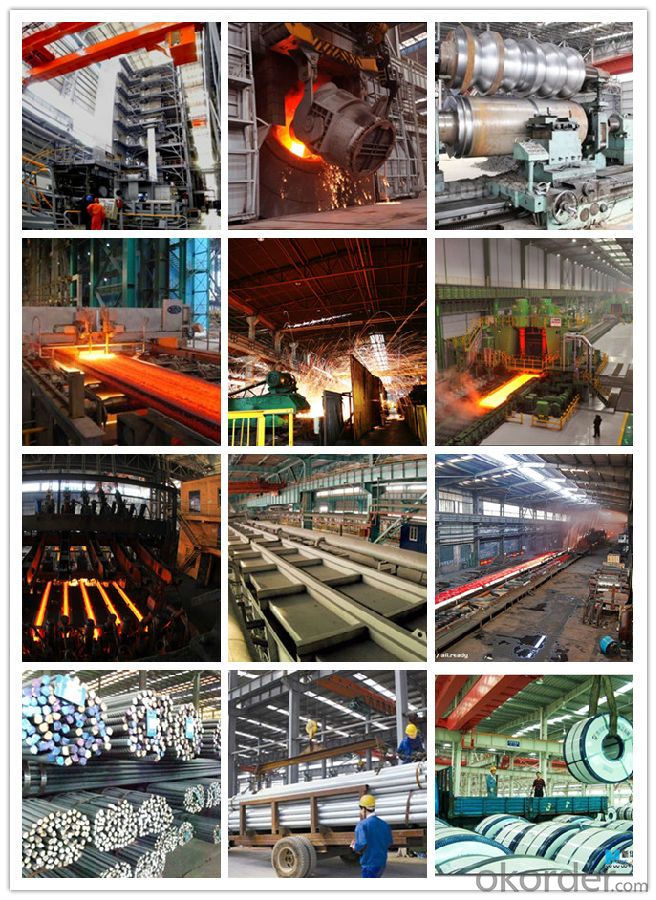
1, Your advantages?
professional products inquiry, products knowledge train (for agents), smooth goods delivery, excellent customer solution proposale
2, Test & Certificate?
SGS test is available, customer inspection before shipping is welcome, third party inspection is no problem
3, Payment Terms?
30% TT as deposit and 70% before delivery.
Irrevocable L/C at sight.
4, Trading Terms?
EXW, FOB, CIF, FFR, CNF
6, After-sale Service?
We provides the services and support you need for every step of our cooperation. We're the business partner you can trust.
For any problem, please kindly contact us at any your convenient time.
We'll reply you in our first priority within 24 hours.
- Q:What are the different methods of surface etching for special steel?
- Some of the different methods of surface etching for special steel include chemical etching, electrochemical etching, and laser etching. Chemical etching involves using a specific chemical solution or acid to selectively remove material from the surface of the steel, creating a desired pattern or design. Electrochemical etching, also known as electroetching or electrolytic etching, utilizes an electric current to dissolve the surface of the steel and create the desired etched pattern. Laser etching, on the other hand, employs a high-powered laser beam to remove material from the surface of the steel, resulting in a precise and intricate etched design. Each method has its own advantages and suitability depending on the specific requirements and characteristics of the special steel being etched.
- Q:How does special steel contribute to the power generation industry?
- Special steel plays a crucial role in the power generation industry by offering high strength, durability, and resistance to extreme temperatures and corrosive environments. It is used in the construction of power plant components such as turbines, generators, boilers, and heat exchangers, ensuring efficient and reliable operation. Additionally, special steel enables the development of advanced technologies such as supercritical and ultra-supercritical power plants, which enhance energy efficiency and reduce emissions, contributing to a more sustainable power generation.
- Q:What are the different surface hardening techniques for special steel parts?
- There are several different surface hardening techniques that can be used for special steel parts, each offering unique advantages and characteristics. Some of the most common surface hardening techniques include: 1. Carburizing: Carburizing involves introducing carbon into the surface of the steel part by heating it in a carbon-rich atmosphere. This process creates a hardened outer layer with a high carbon content, while maintaining a tough and ductile core. Carburizing improves wear resistance and increases the overall strength of the part. 2. Nitriding: Nitriding is a process where nitrogen is diffused into the surface of the steel part, forming nitrides. This results in a hard, wear-resistant surface layer with improved fatigue strength. Nitriding can be performed at lower temperatures, reducing the risk of distortion or dimensional changes in the part. 3. Induction Hardening: Induction hardening uses high-frequency induction heating to selectively heat the surface of the steel part. This localized heating is followed by rapid quenching, creating a hardened outer layer. Induction hardening offers precise control over the hardened depth and can be applied to specific areas, enhancing the wear resistance and strength of critical regions. 4. Flame Hardening: Flame hardening involves heating the surface of the steel part using an oxy-acetylene or oxy-propane flame. The heated area is then quickly quenched, resulting in a hardened surface layer. Flame hardening is commonly used for large or irregularly shaped parts and provides excellent wear resistance. 5. Laser Hardening: Laser hardening utilizes a high-intensity laser beam to heat and rapidly cool the surface of the steel part. This process allows for precise control over the hardened area and depth, minimizing distortion and maintaining tight tolerances. Laser hardening is particularly effective for small, complex parts or localized hardening requirements. These surface hardening techniques offer various benefits depending on the specific requirements of the steel part. By choosing the appropriate method, manufacturers can enhance the durability, strength, and performance of special steel parts in diverse applications.
- Q:What are the different methods of surface hardening for special steel?
- There are several methods of surface hardening for special steel, including carburizing, nitriding, induction hardening, flame hardening, and laser hardening.
- Q:Can special steel be used in the semiconductor manufacturing industry?
- Yes, special steel can be used in the semiconductor manufacturing industry. Special steel, such as stainless steel or tool steel, is commonly employed in various applications within the semiconductor industry. It is used for making equipment and components that require high levels of cleanliness, corrosion resistance, and precision. Special steel alloys are often utilized in the fabrication of semiconductor processing tools, vacuum chambers, wafer carriers, and other critical parts to ensure optimal performance and reliability in the manufacturing process.
- Q:What is the significance of special steel in the medical field?
- Special steel, which is also referred to as medical grade steel, holds a vital role in the medical field due to its distinct properties and importance. Specifically designed and produced to meet the strict requirements of the healthcare industry, special steel's significance in the medical field can be grasped through the following points: 1. Biocompatibility: Special steel demonstrates biocompatibility, meaning it is non-toxic and does not elicit an adverse reaction when it comes into contact with the human body. This makes it an ideal material for medical devices like surgical instruments, implants, and orthopedic tools. 2. Resistance to corrosion: Special steel exhibits high resistance to corrosion and rust, ensuring the endurance and durability of medical instruments. Instruments used in surgical procedures require repeated sterilization, and the corrosive nature of sterilization agents can degrade ordinary steel. Special steel, with its superior resistance to corrosion, can withstand these harsh conditions, decreasing the risk of contamination and preserving the integrity of medical equipment. 3. Mechanical properties: Special steel possesses exceptional mechanical properties, such as high strength, toughness, and ductility. These characteristics are crucial for medical devices as they need to endure the stresses and strains of surgical procedures, maintain their shape, and deliver reliable performance. 4. Compatibility with sterilization: Special steel can withstand various sterilization methods, including steam sterilization, ethylene oxide sterilization, and gamma radiation. This guarantees that medical instruments made from special steel can be effectively sterilized, preventing the transmission of infections and minimizing the risk of contamination during surgeries. 5. Precision manufacturing: Special steel can be shaped into intricate forms and sizes, enabling the production of precise medical instruments. Its superior machinability allows for the creation of fine and sharp edges, which are vital for surgical tools used in delicate procedures. 6. Antibacterial properties: Certain special steels, such as stainless steel, possess inherent antibacterial properties. This characteristic is particularly crucial in the medical field, where preventing infections is of utmost importance. Instruments made from antibacterial special steel can hinder the growth of bacteria, minimizing the risk of post-operative complications. In conclusion, the significance of special steel in the medical field lies in its biocompatibility, resistance to corrosion, mechanical properties, compatibility with sterilization, precision manufacturing, and potential antibacterial properties. These qualities render special steel an indispensable material for the manufacturing of medical devices, ensuring their dependability, durability, and safety for both healthcare professionals and patients.
- Q:How does special steel contribute to the heat resistance of products?
- Special steel contributes to the heat resistance of products by offering superior mechanical properties that allow them to withstand high temperatures without deforming or losing their structural integrity. The unique composition and manufacturing process of special steel result in enhanced heat resistance, making it an ideal material for applications exposed to extreme heat conditions. Special steel is designed to have a high melting point, which means it can endure higher temperatures compared to standard steel. This is achieved by incorporating alloying elements such as chromium, nickel, molybdenum, or vanadium, which improve the steel's ability to withstand heat. These elements form stable oxide layers on the surface of the steel, acting as a barrier against oxidation and preventing the steel from losing strength or becoming brittle when exposed to high temperatures. Furthermore, special steel is often treated with heat-resistant coatings or undergoes specialized heat treatment processes to enhance its heat resistance even further. These treatments can include quenching and tempering, annealing, or precipitation hardening, depending on the specific requirements of the product. These processes alter the steel's microstructure, improving its resistance to thermal fatigue, creep, and thermal shock. The heat resistance provided by special steel allows for the creation of products that can operate in demanding environments such as aerospace, automotive, power generation, and industrial applications. For instance, in the aerospace industry, special steel is used to manufacture components like turbine blades that are exposed to extremely high temperatures in jet engines. In the automotive industry, it is utilized for manufacturing exhaust systems and engine components that need to withstand intense heat from combustion processes. In summary, special steel contributes to the heat resistance of products by offering a higher melting point, improved oxidation resistance, and enhanced mechanical properties that allow them to maintain their structural integrity and functionality even under extreme heat conditions. This makes special steel an essential material for various industries seeking reliable and durable solutions that can withstand high temperatures.
- Q:Can special steel be used in food processing?
- Food processing can indeed utilize special steel. The food processing industry commonly relies on special steels, like stainless steel, because of their distinct properties that make them suitable for safely handling food. Stainless steel, for example, is frequently chosen due to its resistance to corrosion, which makes it an excellent option for handling acidic or salty foods without the fear of contamination. Moreover, stainless steel is non-reactive, ensuring that no harmful substances are released into the food during processing. Furthermore, stainless steel is easy to clean and maintain, guaranteeing the maintenance of high hygiene standards in food processing facilities. As a result of these qualities, special steels, including stainless steel, find extensive use in the manufacturing of food processing equipment, such as tanks, pipes, and utensils.
- Q:What are the different standards and specifications for special steel?
- There are several standards and specifications for special steel, which vary depending on the specific type and application of the steel. Some common standards include AISI (American Iron and Steel Institute), ASTM (American Society for Testing and Materials), EN (European Norm), and JIS (Japanese Industrial Standards). These standards define the chemical composition, mechanical properties, and manufacturing processes required for special steel to meet certain quality and performance standards. Additionally, there may be specific specifications for different industries or applications, such as aerospace, automotive, or construction, that further define the requirements for special steel.
- Q:What are the different shapes and forms in which special steel is available?
- Various shapes and forms of special steel are available to satisfy the diverse industrial and engineering needs. Some examples of special steel include: 1. Bars: Bars of special steel find extensive usage in the construction, automotive, and machinery sectors. They come in round, square, hexagonal, and flat shapes, providing design flexibility and ease of machining. 2. Sheets and Plates: Special steel sheets and plates are utilized in the production of robust components and structures. These sheets and plates are obtainable in different sizes and thicknesses, ensuring suitability for a wide range of applications. 3. Tubes and Pipes: Special steel tubes and pipes are commonly employed in industries like oil and gas, construction, and automotive. These tubes and pipes are available in various dimensions and can be either seamless or welded to meet specific requirements. 4. Wire: Special steel wire is extensively used for manufacturing springs, cables, fasteners, and other products that demand high tensile strength and corrosion resistance. It is available in different diameters and can undergo further processing techniques like drawing or annealing. 5. Forgings: Special steel can also be acquired in the form of forgings, which are shaped through controlled heating and mechanical pressure. Forgings possess exceptional strength and toughness, making them ideal for critical components in aerospace, power generation, and heavy machinery industries. 6. Castings: Special steel castings are produced by melting the steel and pouring it into molds. This casting process allows for the creation of intricate shapes and details, rendering castings suitable for applications in the automotive, energy, and mining sectors. 7. Profiles: Special steel profiles are tailor-made shapes that are specifically designed to fulfill unique engineering requirements. These profiles can be extruded, rolled, or cold-drawn, and are widely utilized in construction, transportation, and manufacturing industries. These examples merely scratch the surface of the diverse range of shapes and forms in which special steel is available. The selection of the most appropriate shape and form depends on the specific application and the desired mechanical properties required for the final product.
1. Manufacturer Overview |
|
|---|---|
| Location | |
| Year Established | |
| Annual Output Value | |
| Main Markets | |
| Company Certifications | |
2. Manufacturer Certificates |
|
|---|---|
| a) Certification Name | |
| Range | |
| Reference | |
| Validity Period | |
3. Manufacturer Capability |
|
|---|---|
| a)Trade Capacity | |
| Nearest Port | |
| Export Percentage | |
| No.of Employees in Trade Department | |
| Language Spoken: | |
| b)Factory Information | |
| Factory Size: | |
| No. of Production Lines | |
| Contract Manufacturing | |
| Product Price Range | |
Send your message to us
Alloy Steel 1.7220/35crmo/SCM435 Tool Steel Special Steel
- Loading Port:
- China main port
- Payment Terms:
- TT OR LC
- Min Order Qty:
- 25 m.t.
- Supply Capability:
- 10000 m.t./month
OKorder Service Pledge
OKorder Financial Service
Similar products
New products
Hot products
Related keywords
